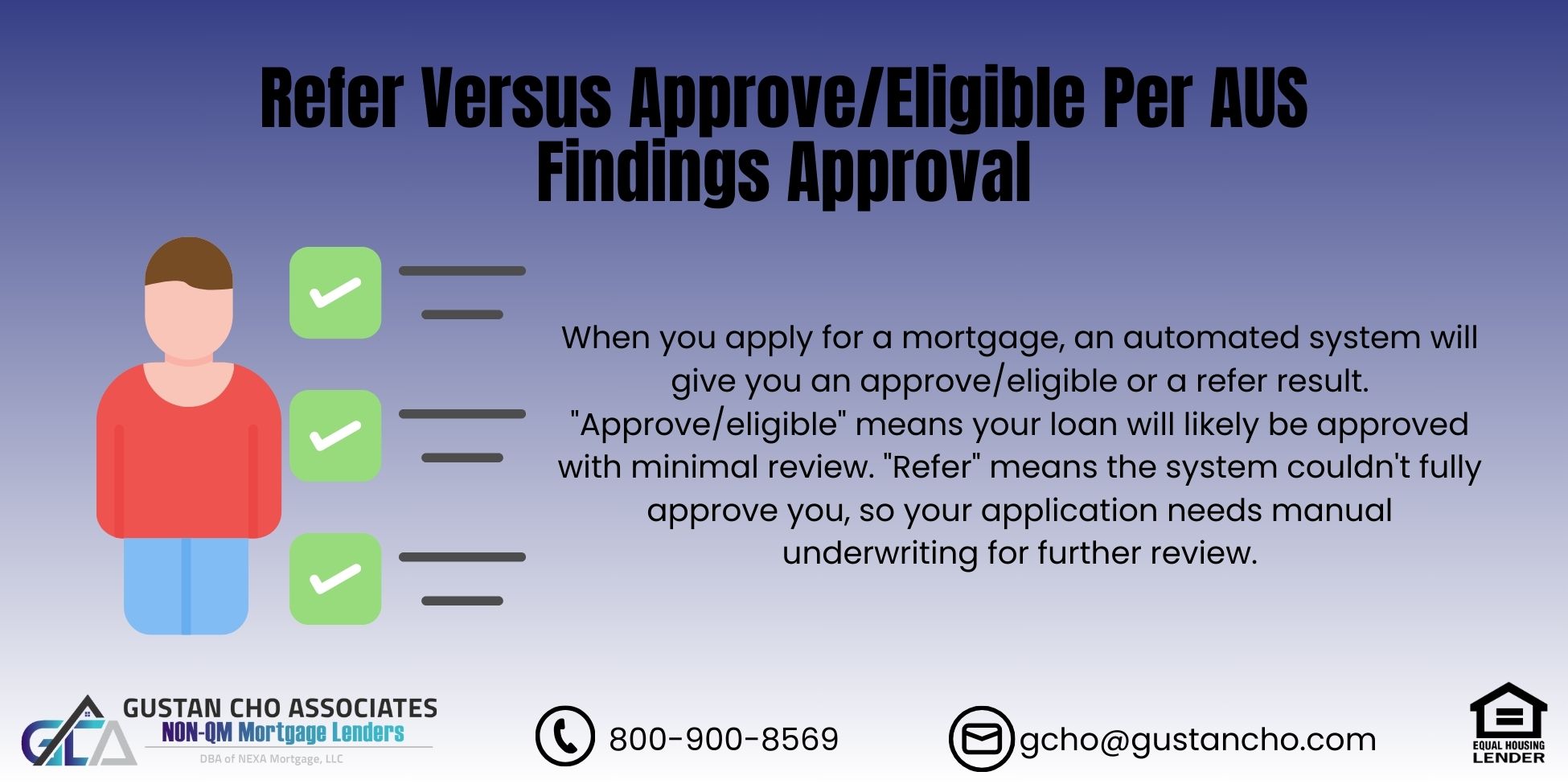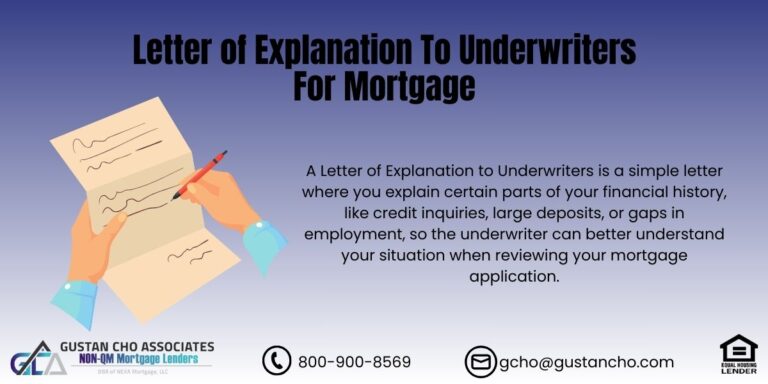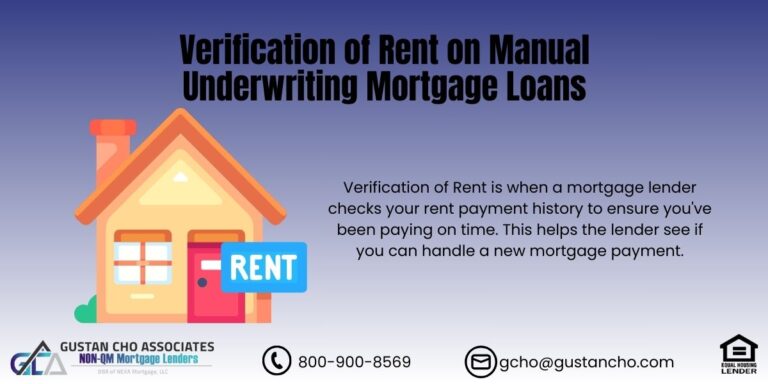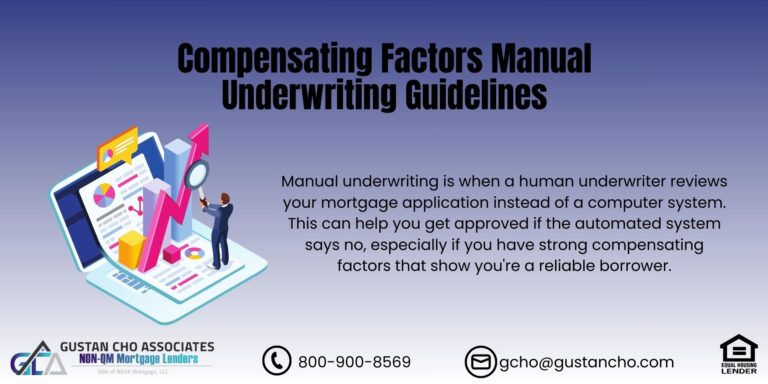Refer Versus Approve/Eligible Per AUS Findings Approval
Refer Versus Approve/Eligible: What You Need to Know for Your FHA Loan Approval in 2024
Getting approved for a mortgage can feel like a huge mountain to climb, especially if you’ve got less-than-perfect credit or a higher debt-to-income ratio.
If you’re applying for an FHA loan, understanding the difference between “refer” and “approve/eligible” is essential. These terms might seem confusing initially, but they play a big role in whether you get the green light from your lender.
This guide will explain refer versus approve/eligible, what they mean in 2024, and how they can impact your FHA loan approval process. Whether you’re buying your first home, refinancing, or want to learn more about how the mortgage process works, this blog will help you easily navigate it.
What Does “Refer” and “Approve/Eligible” Mean?
When you apply for a home loan, the lender will use an Automated Underwriting System (AUS) to review your application. This system quickly analyzes your financial situation, like your credit score, income, and debt-to-income ratio, to see if you qualify for a loan. Based on this information, the AUS will return one of two results:
- Approve/Eligible: This is the outcome you want! It means the system approves you for the loan, and you’re eligible based on the initial review. You’ll likely sail through the rest of the mortgage process with minimal hiccups.
- Refer: This means the system couldn’t fully approve you. It doesn’t mean you’re denied, but your loan needs to be manually underwritten by a human underwriter for further review. Manual underwriting requires more documentation and is a more thorough process, but it doesn’t necessarily mean you won’t get approved.
Speak With Our Loan Officer for Mortgage Loans
Updates to FHA Loan Approval Process in 2024
In 2024, HUD (U.S. Housing and Urban Development) made some important updates to processing FHA loan applications, especially for borrowers with credit scores below 640. It’s now more challenging to get an approve/eligible result if your credit is under 640. This means more borrowers will see a refer status and may need to go through manual underwriting.
This change reflects HUD’s desire to ensure borrowers are financially stable enough to handle a mortgage, even with lower credit scores. But don’t worry! Many borrowers still get approved through manual underwriting.
Manual Underwriting: A Second Chance After “Refer”
Getting a “refer” result doesn’t mean your dreams of homeownership are over. Instead, it means a mortgage underwriter will personally review your file to determine if you can handle the loan. Manual underwriting takes into account things that the AUS might miss, like compensating factors that show you’re a responsible borrower despite your credit score or debt-to-income ratio.
What Are Compensating Factors?
Positive aspects of your financial situation that can offset higher risks are called compensating factors. For example, suppose you have a higher debt-to-income ratio. Still, you’ve been saving regularly, paying rent on time, or have a large cash reserve. In that case, an underwriter might give you the green light. Here are some common compensating factors:
- Strong job history: It shows stability if you’ve been with the same employer for several years.
- Residual income: The extra money left after paying all your bills every month can help prove you can manage a mortgage.
- Rent history: A solid history of paying rent on time for the past 12 months can work in your favor.
FHA Loans and Manual Underwriting Guidelines for 2024
The 2024 HUD FHA Handbook hasn’t changed much, but the algorithms behind the AUS have. FHA loans are still one of the most popular options for first-time homebuyers or those with less-than-perfect credit because of their lenient requirements. However, if you’re applying with a credit score below 640, it’s more likely that your application will go to manual underwriting.
Basic FHA Loan Requirements for 2024:
- Credit score of 580+: You may be eligible for an FHA loan with a down payment as low as 3.5%.
- Credit score of 500-579: You’ll need at least 10% down to qualify.
- Chapter 7 Bankruptcy: A two-year waiting period after the discharge date.
- Foreclosure, short sale, or deed-in-lieu: A three-year waiting period.
- Collections and charge-offs: You don’t have to pay off outstanding collections or charge-offs to qualify for an FHA loan.
Speak With Our Loan Officer for FHA Loans
Debt-to-Income Ratio (DTI) Requirements

Your debt-to-income ratio (DTI) plays a crucial role in determining whether you receive an approve/eligible or a refer result. This ratio assesses your gross monthly income against your monthly debt payments. FHA loans have specific guidelines on DTI ratios:
- For approve/eligible results: FHA allows a maximum DTI of 46.9% on the front end (your housing expenses) and 56.9% on the back end (your total monthly debt).
- For manual underwriting: The ratios are stricter. Typically, underwriters allow a DTI of 31%/43% without compensating factors. You can get approved with compensating factors with higher ratios like 40% /50 %.
FHA TOTAL Scorecard Guidelines on FHA Loans
Mortgage underwriters need to make sure that borrowers meet all FHA TOTAL ScoreCard Guidelines. Mortgage underwriters have a lot of underwriter discretion when it comes to manual underwriting. For example, borrowers are required to have timely payments in the past 24 months with no late payments with manual underwrites.
Mortgage underwriters can make an exception and permit one or two late payments in the past 24 months if the event was due to extenuating circumstances.
Verification of Rent and Other Requirements for Manual Underwriting
One of the most important things you’ll need for manual underwriting is a Verification of Rent (VOR). This proves that you’ve been paying your rent on time for at least 12 months. However, suppose you’ve been living with family rent-free to save up for a down payment. In that case, some underwriters may make an exception.
Additional documentation may include:
- Recent pay stubs or tax returns
- Proof of consistent savings
- Letters explaining any gaps in employment or late payments
The Role of Lenders in Refer Versus Approve/Eligible Outcomes
Not all lenders can handle manual underwriting. Some lenders prefer to work only with approve/eligible files because they require less time and effort. However, others, like Non-QM Mortgage Lenders, specialize in manually underwritten loans. These lenders can often get you approved even if the AUS initially flags your application as a refer.
Speak With Our Loan Officer for Mortgage Loans
How to Improve Your Chances of Getting an Approve/Eligible in 2024
If you’re aiming for an approve/eligible decision, here are some tips to increase your chances:
- Improve your credit score: Having a higher credit score can improve your chances of approval via the automated underwriting system (AUS). Prioritize paying off your debts and aim to steer clear of late payments.
- Lower your DTI: Pay off as much debt as possible before applying for a loan. Even small reductions in your debt load can make a difference.
- Save for a larger down payment: Even though FHA loans demand just a 3.5% down payment for individuals with credit scores over 580, providing a larger down payment can enhance your application.
- Avoid large financial changes: Don’t take on new debt or make major purchases before or during the mortgage process.
What Happens if You Get a Refer Versus Approve/Eligible?
If your AUS comes back with a refer result, your loan officer will likely discuss the next steps with you. This usually involves preparing for manual underwriting by gathering the necessary documentation. While the manual underwriting process takes a little longer, many borrowers who start with a refer decision still end up with an approval.
Here’s what to expect:
- Document Gathering: You’ll need to provide additional documentation, like bank statements, proof of income, rent history, and possibly letters explaining any financial mishaps.
- Underwriter Review: A human underwriter will carefully review your financial situation. They’ll look for compensating factors to offset any weaknesses in your credit score or DTI.
- Final Decision: After reviewing your file, the underwriter will approve or deny your loan. If approved, you’ll proceed with the loan process like any other borrower.
FHA Loans During a Chapter 13 Bankruptcy in 2024
If you’re in a Chapter 13 bankruptcy repayment plan, you can still qualify for an FHA loan after making at least 12 months of on-time payments. However, your loan will need to go through manual underwriting and approval from the bankruptcy trustee. There is no waiting period after a Chapter 13 discharge, but if it’s been less than two years since your discharge, manual underwriting is required.
Conclusion: What Refer Versus Approve/Eligible Means for You
Understanding refer versus approve/eligible is crucial for anyone applying for an FHA loan in 2024. While getting an approve/eligible result makes the process smoother, getting a refer doesn’t mean the end of the road. With manual underwriting, many borrowers who start with a refer result still get approved.
If you want to buy a home or refinance, don’t let a refer status discourage you. Work with a lender who understands how to navigate manual underwriting and can help you gather the right documentation to get you approved.
Ready to take the next step? Contact us today to see if you qualify for an FHA loan and get started on homeownership.
Speak With Our Loan Officer for Mortgage Loans
FAQs: Refer Versus Approve/Eligible Per AUS Findings Approval
-
1. What does “refer versus approve/eligible” mean in mortgage terms? When you apply for a mortgage, an automated system will give you an approve/eligible or a refer result. “Approve/eligible” means your loan will likely be approved with minimal review. “Refer” means the system couldn’t fully approve you, so your application needs manual underwriting for further review.
-
2. Can I still get a loan if I receive a “refer” status? Yes! A “refer” status doesn’t mean denial. This means that a human underwriter needs to take a closer look at your financial situation through manual underwriting to decide if you qualify for the loan.
-
3. How does manual underwriting work after getting a “refer” status? Manual underwriting involves a mortgage underwriter reviewing your financial details, such as your credit history, income, and rent payments, to determine if you’re still a good candidate for a loan. This process takes longer but can result in approval even with a “refer” status.
-
4. Why is it harder to get an “approve/eligible” result in 2024? In 2024, HUD made changes that made it tougher to get an “approve/eligible” result, especially if your credit score is below 640. This ensures that borrowers with lower credit scores are financially stable enough to handle a mortgage.
-
5. How can I increase my chances of getting an “approve/eligible” result? Improving your credit score, reducing your debt-to-income ratio, and setting aside money for a larger down payment can increase your chances of receiving an approve/eligible outcome. It’s also crucial to avoid major financial changes, such as acquiring new debt while going through the mortgage process.
-
6. What are compensating factors, and how do they help in manual underwriting? Additional savings or a secure job can counter risks and increase approval chances during manual underwriting, even with a less-than-ideal credit score.
-
7. What debt-to-income (DTI) ratio do I need for an approve/eligible result? For an approve/eligible result with FHA loans, your DTI ratio should be no higher than 46.9% on the front end (housing costs) and 56.9% on the back end (total debt). The DTI limits are usually stricter for manual underwriting unless you have compensating factors.
-
8. What if my loan goes to manual underwriting after getting a “refer” result? Manual underwriting is the next step if you get a “refer” result. You’ll need to provide more documents like rent history, pay stubs, and bank statements. A human underwriter will review your file, and if approved, you’ll move forward with the loan.
-
9. Can I qualify for an FHA loan while in Chapter 13 bankruptcy? You are eligible for an FHA loan while in Chapter 13 Bankruptcy after completing 12 months of on-time payments, and the approval of the bankruptcy trustee is necessary.
-
10. Does a “refer versus approve/eligible” result affect all lenders similarly? Not all lenders handle manual underwriting. Some only work with approve/eligible files. However, lenders like Non-QM mortgage lenders specialize in manually underwritten loans so that they can help you even with a “refer” result.
If you have any questions about Refer Versus Approve/Eligible, please contact us at 800-900-8569. Text us for a faster response. Or email us at gcho@gustancho.com. The team at Non-QM Mortgage Lenders is available 7 days a week, on evenings, weekends, and holidays. Speak With Our Loan Officer for Mortgage Loans
This blog about Refer Versus Approve/Eligible Per AUS Findings Approval was updated on September 4th, 2024.







